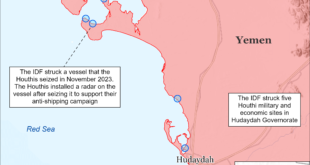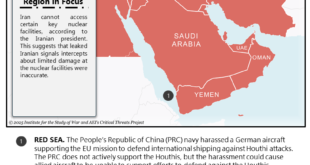Context
Following the collapse of communism throughout Eastern Europe and the subsequent breakup of Yugoslavia, the countries in the Balkan area have experienced changes in their demographics, usually in the form of an abrupt decrease in birth rates and population. While the decrease in birth rates was hardly surprising, considering the pro-natalist policies supported by communist governments throughout the Eastern Bloc (policies which have not been pursued once the regime changed), the opening of borders lead to a massive migration towards the more developed countries of Western Europe.
Two main issues arise as a result of the demographic changes of the post-communist period. Firstly, it is important to observe the effects which the overall decrease in the population of the Balkan states might have on their general status. Second, the demographic changes are not restricted only to the increase or decrease of population but to a possible changing ethnic balance in some regions, particularly those of former Yugoslavia. Such a change is highly important, and has the potential to be more destabilizing to a region where inter-ethnic clashes are known to occur than the simple decrease in total population numbers; in the long term, such a shift in the demographics of the ethnic groups might pose yet another security challenge to an area in which borders have not been definitively drawn and which saw it’s most recent ethnic-based secession less than half a decade ago, when Kosovo proclaimed its independence from Serbia in February 2008.
Population number
The decrease in overall population has been an almost universal constant in the former communist countries of the Balkan Peninsula, particularly in the light of EU enlargement and new visa-free regimes of travel which facilitated the migration of people westwards. Censuses conducted over the past decade show a relatively steep decrease in population in countries like Bulgaria[1] and Serbia[2] and a more mild decline in the population of Albania, although in Albania’s case, the decrease became more acute in recent years. The impact of such a change might not be observed immediately, and on short term it even had positive effects due to the influx of monetary resources brought by the migrant workers. However, in the long run, the decrease in population might have a more significant effect, particularly in the context of the general aging of Europe’s population which will mean that the active population will have to accommodate a disproportionately large number of elder people. In the absence of a welfare state seeking to alleviate gaps in wealth, such a situation might eventually lead to social unrest in the future. For the time being however, the sharp decrease in population numbers have not had any major ill-effects. If future problems are to be avoided, the political leadership of the formerly communist Balkan states should take measures meant to stimulate economic development in order to hinder the massive migration of people and seek to encourage an increase in birth-rates (a measure which should be taken over all of Europe).
In fact, the massive migration from the Balkan countries towards the more developed states of the EU has most likely reached its apogee and will decline in following years, especially in the existing economic climate, with western economies contracting and leading to an increase in unemployment.
Ethno-religious concerns
The other demographic concern comes from the areas of mixed populations in the Balkan regions since inter-ethnic conflict has occurred in the area over the past centuries. The most recent full-blown war, the war in Bosnia of 1992-1995, has shown just how violent such overlapping territorial claims can be. The 2008 secession of Kosovo from Serbia has occurred without an armed conflict only due to the presence of foreign peace-keeping forces; moreover, the province saw its share of violent clashes prior to the 1999 NATO intervention.
Following the dissolution of Yugoslavia, the newly emerging states attained some degree of ethnic homogeneity and, as a result, the existing nationalist forces ran their course and ebbed to a certain extent. However it is highly unlikely that the current borders between Balkan states are permanent, and further possible changes will probably be seen over the following decades, as some territorial claims still remain unresolved and areas with a high amount of ethnic mixing remain. Such is the case with the Republic of Macedonia, a traditionally disputed area ever since the 19th century and the main cause of the Second Balkan War of 1913; the current issue lays in the fact that the Albanian population forms a continuum which has the Albania state as it’s core, but flows outside its existing boundaries into Kosovo and the north and west of Macedonia. This situation caused an uprising in 2001 in the areas of Macedonia where Albanians formed a majority which ended with an agreement signed in Ohrid, granting the Albanian language official status in areas where Albanian-speakers comprised 20% of the population[3].The situation seems to have stabilized for the time being but the territorial dispute remains and is likely to cause new tensions in the future.
The situation of Bosnia-Herzegovina remains uncertain and no comprehensive analysis can be performed over the country at the time due to the lack of accurate and up-to-date data regarding the population. A population census is supposed to be conducted in 2013, although previous such attempts have existed but failed. The prospect of a census really being conducted in 2013 seems promising though, as no major hurdles exist and legislation has already been passed by the Bosnian Parliamentary Assembly[4]. Should the census show a high degree of homogeneity in Republika Srpska, this might stir up the nationalistic forces which demand secession from the Federation and a possible unification with Serbia, although the foreign powers currently in control of the Bosnian state will certainly object and hinder such claims, at least temporarily.
A major concern among the Balkan states and related to this particular aspect of demographics is that Turkey might gain significant influence in the region once more due to their support for the Muslim communities in countries like Bulgaria, Montenegro, Serbia, Bosnia-Herzegovina and, of course, Albania. There is a perception that a wave of so-called “neo-ottomanism” is rising and the fear of a Muslim overlordship is still relatively fresh in the collective memory of the Balkan nations since they only obtained independence from the Ottoman Empire in the late 19th or early 20th century[5]. This fear is, in turn, coupled with the feeling of insecurity regarding the future, as Muslim communities usually have higher than average birth-rates meaning that, in the long run, the number of people of Islamic faith in countries such as Bulgaria, Macedonia, Montenegro, Serbia and Bosnia will increase and will gain more influence in the internal affairs of those countries. There is even talk of a “green corridor”, stretching from Turkey and going through the south of Bulgaria, through Kosovo and Albania and right up to the area of Novi Pazar (the border region between Serbia and Montenegro) and Bosnia.[6] [7] [8]
Such fears, however, are generally exaggerated for a variety of reasons. First, the proportion of Muslims compared to the total population of the respective countries remains low, with censuses showing that said population comprises only 2% of the population of Serbia and just below 10% of the population of Bulgaria; moreover, the proportion does not seem to be increasing at a particularly fast rate, and in Bulgaria the percentage of Muslims actually declined over the past decade[9]. Second, the likelihood that the Muslim communities will automatically place themselves under Turkish influence and command is slim, especially considering the somewhat troubled history of the Albanians within the Ottoman Empire and the revolts of 1911, when armed factions demanded a unification of all territories inhabited by ethnic Albanians and a high degree of autonomy within the Empire[10]. The same holds true for the Bosnian Muslims, who have developed a sense of national identity, “Bosniakhood”, in the midst of the 1992-1995 war in Bosnia, when the Muslim political leaders felt that the mere religious identity was not enough to represent the entire national identity of the community[11]. In spite of a slight tendency towards de-secularization following the collapse of communism, religious identity in the Balkans is still secondary to the national identity; hence, should a neo-ottoman policy be real, Turkey would have to rely on more than just religious sentiment in order to gain influence in the respective communities. On the same note, the Muslim communities of the Balkans are probably the most secular such communities in the world, all the more reason why mere religious similarities would not automatically place them under Turkish control. In fact, whether neo-ottomanism exists at all is still a matter of debate and controversy and even if such a policy would be real, it would be based more on nostalgia rather than any real possibility and would lack power. Turkey itself is facing a secessionist movements of its own: the Kurdish people who live in east Anatolia and comprise about a quarter of the country’s population have a long history of revolts against the central government and demand independence in spite of the common religious identity they share with the Turkish people. This means that Turkey will have to divert a large amount of resources just to keep Turkish Kurdistan from seceding and will also have to focus their diplomatic efforts towards preventing a possible break-away and recognition of independence of Iraqi Kurdistan as well, which obtained a high degree of autonomy following the military intervention of the American lead coalition against Saddam Hussein’s regime. These more pressing issues will most likely make a would-be “neo-ottoman” policy in the Balkans secondary or tertiary as far as politics and policies of Turkey are concerned.
Conclusions
In spite of the overall decrease in population in the former communist states of the Balkans, such a decrease can still be halted and overturned with proper policies by the authorities and as a consequence of the economic problems which Western countries face today. The simple decrease in population will not have any major economic or social effects for the time being.
The threats of a neo-ottoman agenda and of an increasing Muslim influence in the Balkans are exaggerated and are not supported by real numbers, as the communities of Islamic faith usually make up a relative small percentage of the general population. The idea of an Islamic corridor through the Balkan Peninsula, stretching from Turkey to Bosnia is also unrealistic and unreasonable, since such a would-be corridor has large gaps which are almost impossible to cover. Moreover, national identity is prevalent, rendering religious identity only secondary in the politics of the Balkans, meaning that prevalently Muslim nations, like Albanians or Bosniaks will not automatically rally behind Turkey and support its policies.
Lastly, even though nationalist forces and irredentist ideas still exist and advocate some border changes, most frontiers between Balkan states are stable for the time being, meaning that current demographic challenges do not pose an imminent threat to the regional peace and security. In the context of further expansion by the EU in the Western Balkans, the risk of such inter-ethnic clashes will decrease even further. The possibility of territorial changes still exists particularly with the Republic of Macedonia and Bosnia-Herzegovina, where nationalistic forces still remain strong and have yet to run their course, however such changes are unlikely to occur in the following few years.
Author:
Bogdan Cristea, M.A. International Studies
bogdan.cristea@workmail.com
References
 Eurasia Press & News
Eurasia Press & News


